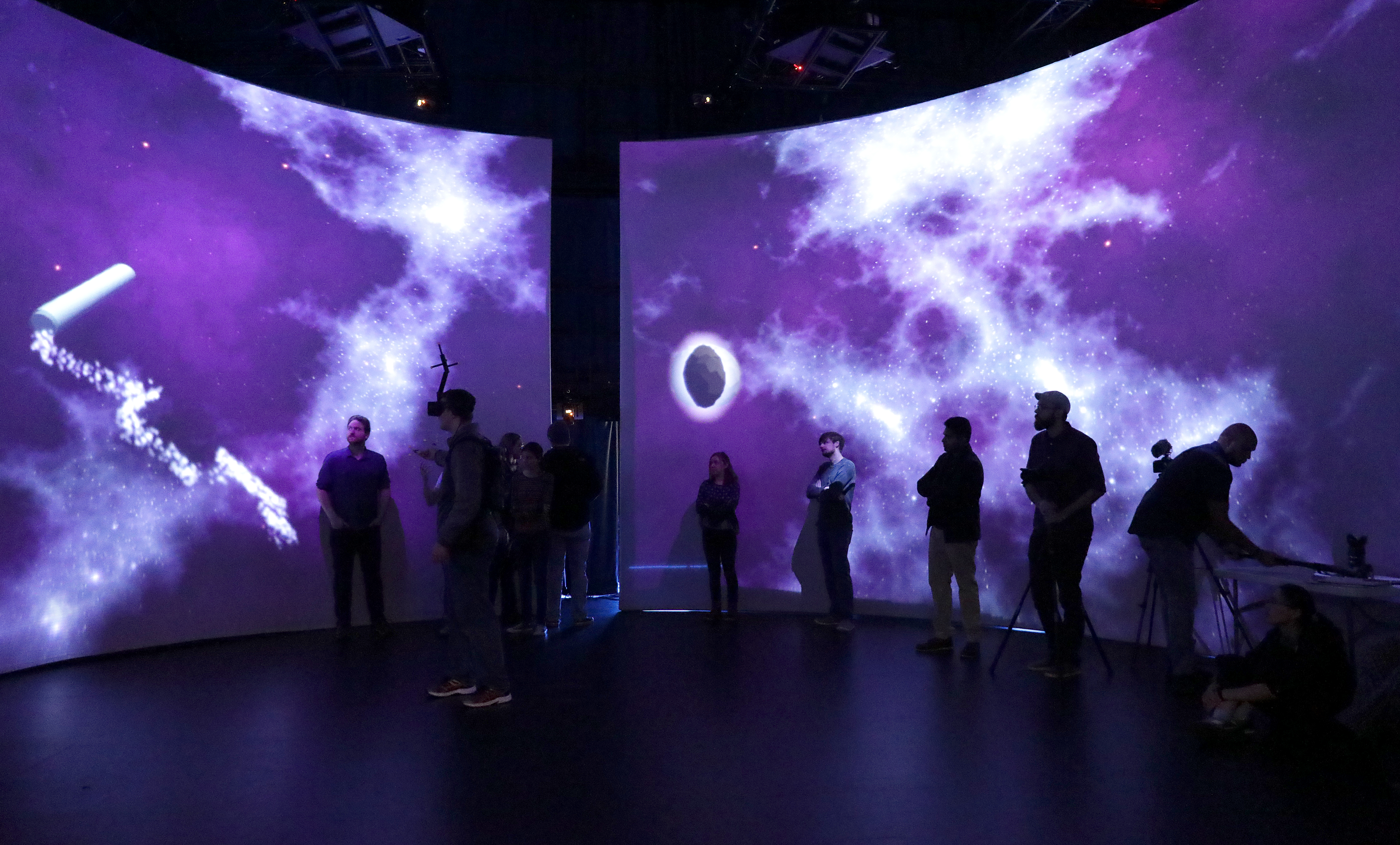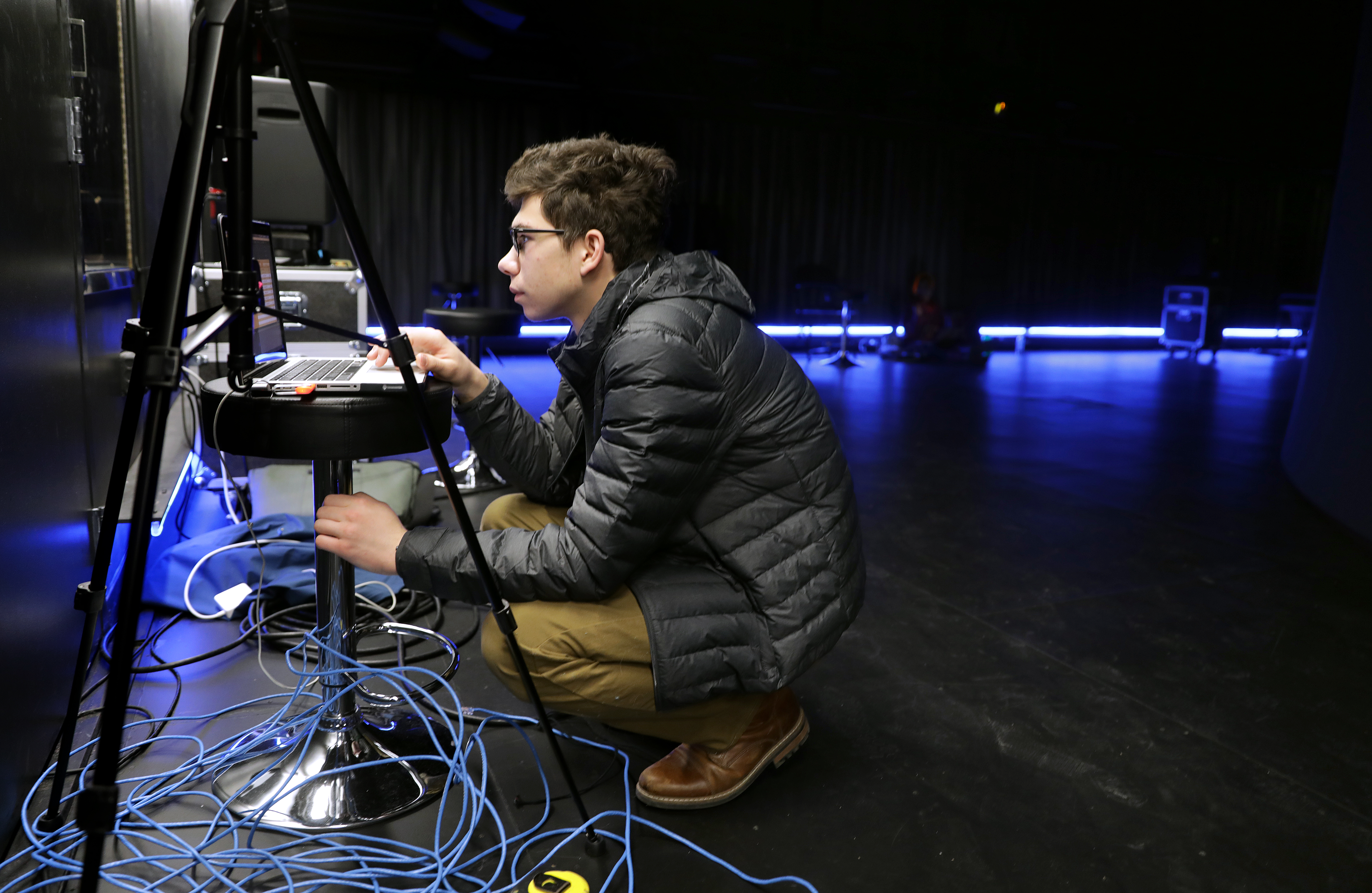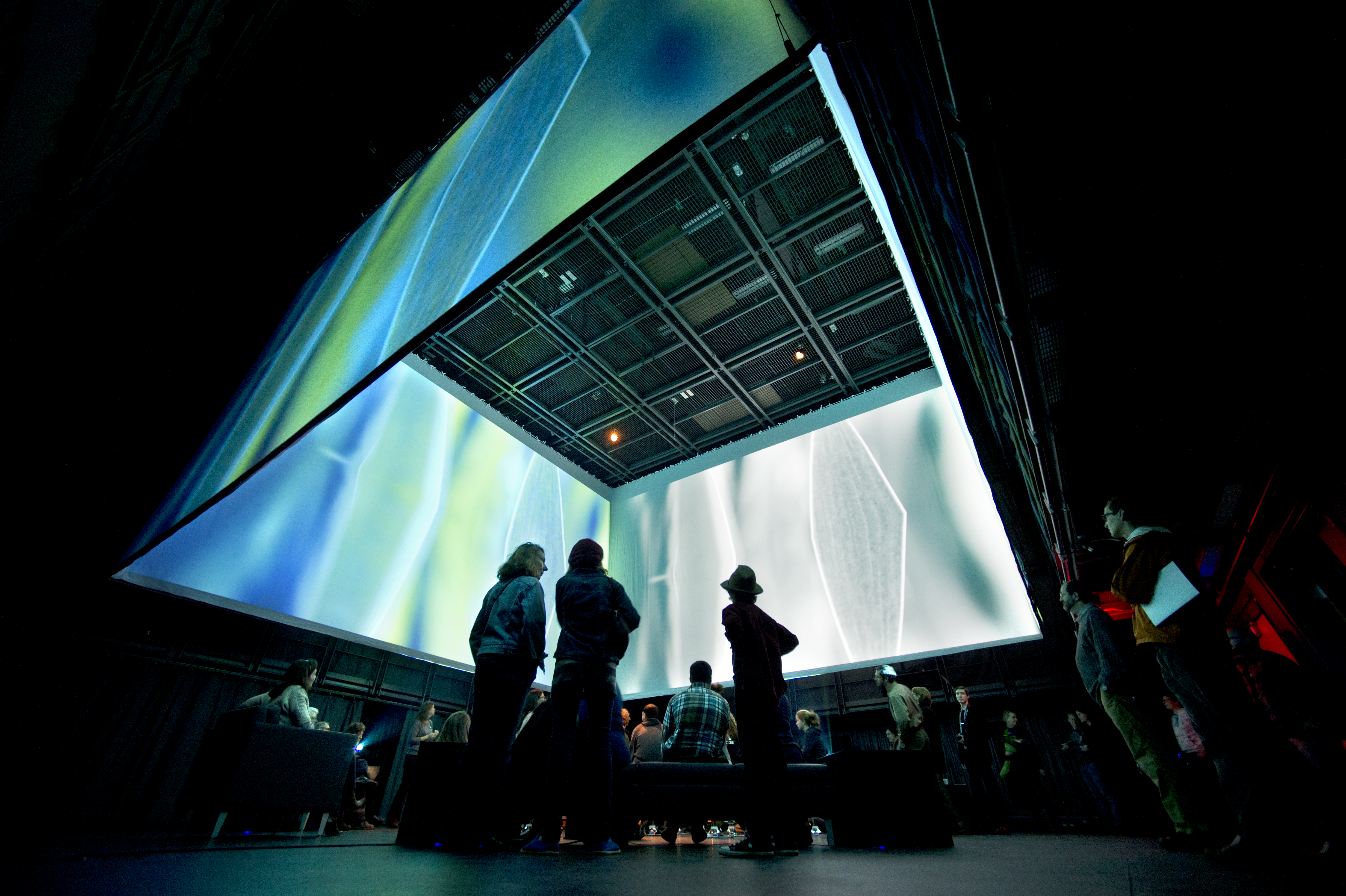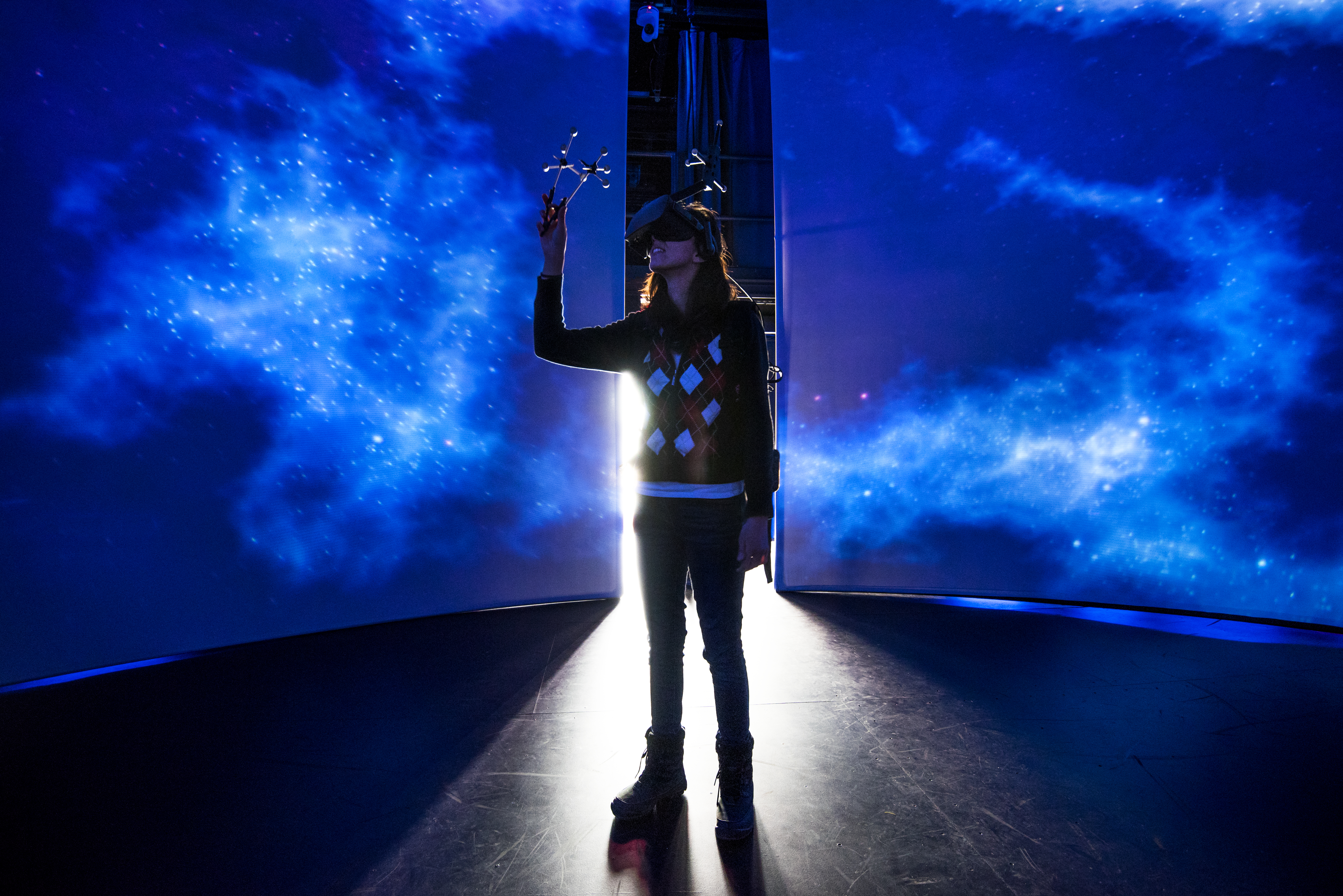
THE CUBE: A SPACE WHERE SCIENCE AND SENSES COLLIDE
THE CUBE: A SPACE WHERE SCIENCE AND SENSES COLLIDE
by Richard Lovegrove

Students from the Honors College demonstrated their winter semester projects inside the Cyclorama in the Cube.
Virtual and augmented reality technologies are changing the research landscape. Scientists can now be transported to any place in the universe, physically explore massive sets of data, visualize and interact with spatial structures of molecules, and walk through a building before it has been constructed.
The Cube, a multidisciplinary, collaborative research environment located in the Moss Arts Center, accomplishes this and more with the Cyclorama, a massive 360-degree cylindrical projection screen suspended from the ceiling. Measuring roughly 32 feet in diameter and 16 feet tall, the unique screen, installed by the Institute for Creativity, Arts, and Technology (ICAT) in 2016, provides an immersive stereoscopic experience for up to 60 people.

Kaelum Hasler, a freshman industrial design student, prepares a presentation.
Cyclorama capabilities have been showcased during the Virginia Tech Science Festival and were featured during an intensive two-week winter session course for students.
Before the Cyclorama, immersive-environment 3-D experiences in the Cube required individual virtual reality headsets and backpack laptops. Now, inexpensive 3-D glasses, which alternate shuttering the left and right eyes 60 times per second, enable numerous viewers to watch the stereoscopic video at the same time.
“This is immersive environment on a large scale,” said Tanner Upthegrove, media engineer for ICAT.
Because the Cyclorama can also use the Cube’s existing 3-D spatial audio and ultrasonic systems, a 149-speaker array that can place sounds at specific spots in the room, its custom screen needed to be acoustically transparent.
To project, the Cyclorama relies on four edge-blended OmniFocus 30260 lensed Digital Projection LaserLITE projectors (fisheye), each with 1920×1200 resolution at 11,000 lumens. By comparison, a quality home theater projector runs at around 1,000 lumens.
The sound of science
A music professor and an engineering professor at Virginia Tech are working together to create a new way to look at data by turning it into sound.
Using a motion capture system and the immersive sound system in the Moss Art Center’s Cube, participants will be able to navigate sonified data using a gesture-driven interface similar to the one that was depicted in the science fiction film “Minority Report.”
The National Science Foundation (NSF) is funding this first-ever collaboration between the university’s School of Performing Arts and College of Engineering, combining elements of music, geospatial science, computer science, and human-computer interaction. The research project will focus on the earth’s upper atmospheric system, which features physical variables that are spatially and temporally rich.
ICAT staff can drive content from their own data visualization platforms to the system. The shape of the Cyclorama’s screens allows for delivery of warped and blended, 120Hz stereo movies at 4K resolution per screen from a single Windows-based machine, which is unique in the industry.
A custom rack-mount computer, including camera calibration for automated alignment and blending, helps match the video to the curved screens. The computer transports eight HD video signals to the four projectors over the Cube’s Cat6 Ethernet infrastructure, two displays per projector.
“It makes sense that we would want to go beyond two-dimensional graphical models of information and make new discoveries using senses other than our eyes,” said Ivica Ico Bukvic, associate professor of composition and multimedia, who is working with Greg Earle, professor of electrical and computer engineering on the special project.
Technologically enhanced: (Opposite page) Students from the Honors College demonstrated their winter semester projects inside the Cyclorama in the Cube. (Above) Ami Behzad, a graduate student studying creative technologies, works on a project in the Cube. (At left) Kaelum Hasler, a freshman industrial design student, prepares a presentation.


Ami Behzad, a graduate student studying creative technologies, works on a project in the Cube.
![]() Exploring the frontiers of music in the Cube
Exploring the frontiers of music in the Cube
Artists travel from around the globe to work in the space, but this video shows how Virginia Tech students can use it as part of their coursework.
Tune in: To learn more about the research studies and other projects taking place in the Cube, go to vtnews.vt.edu.